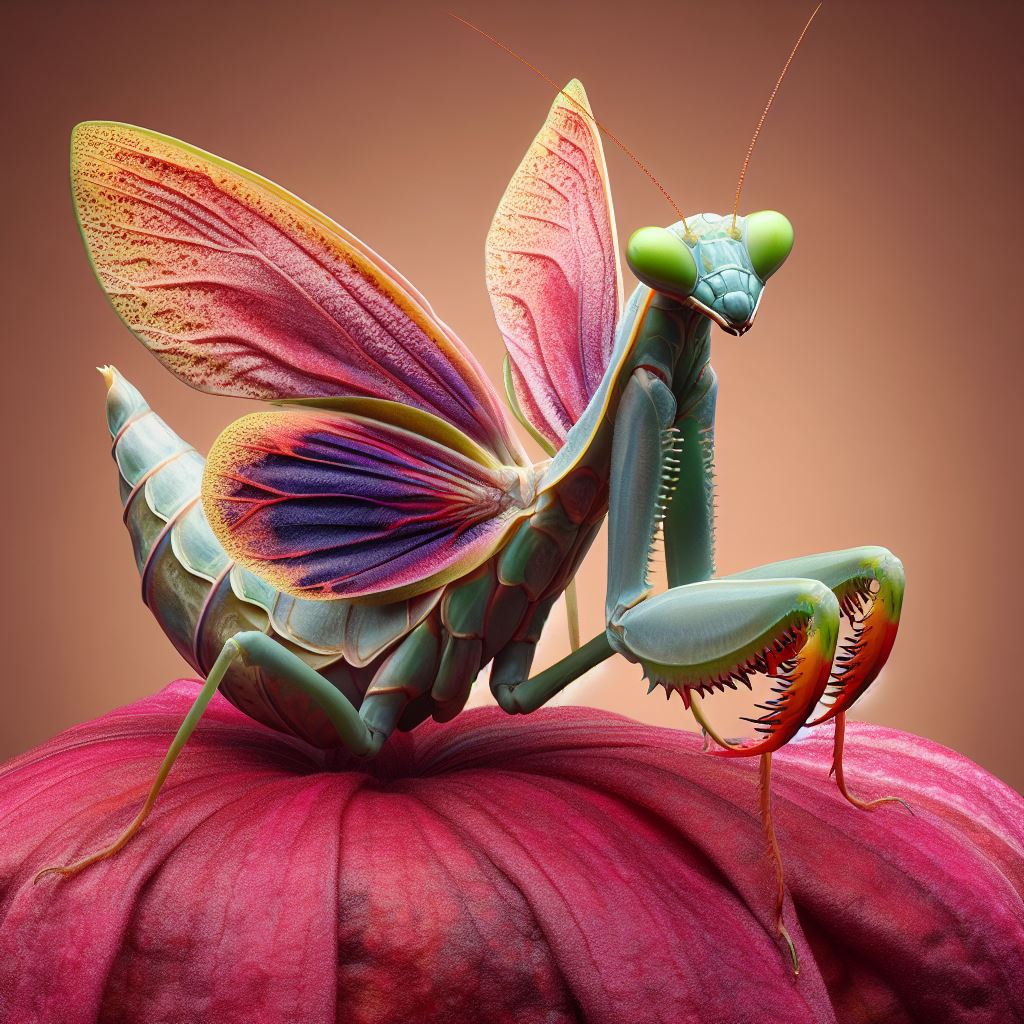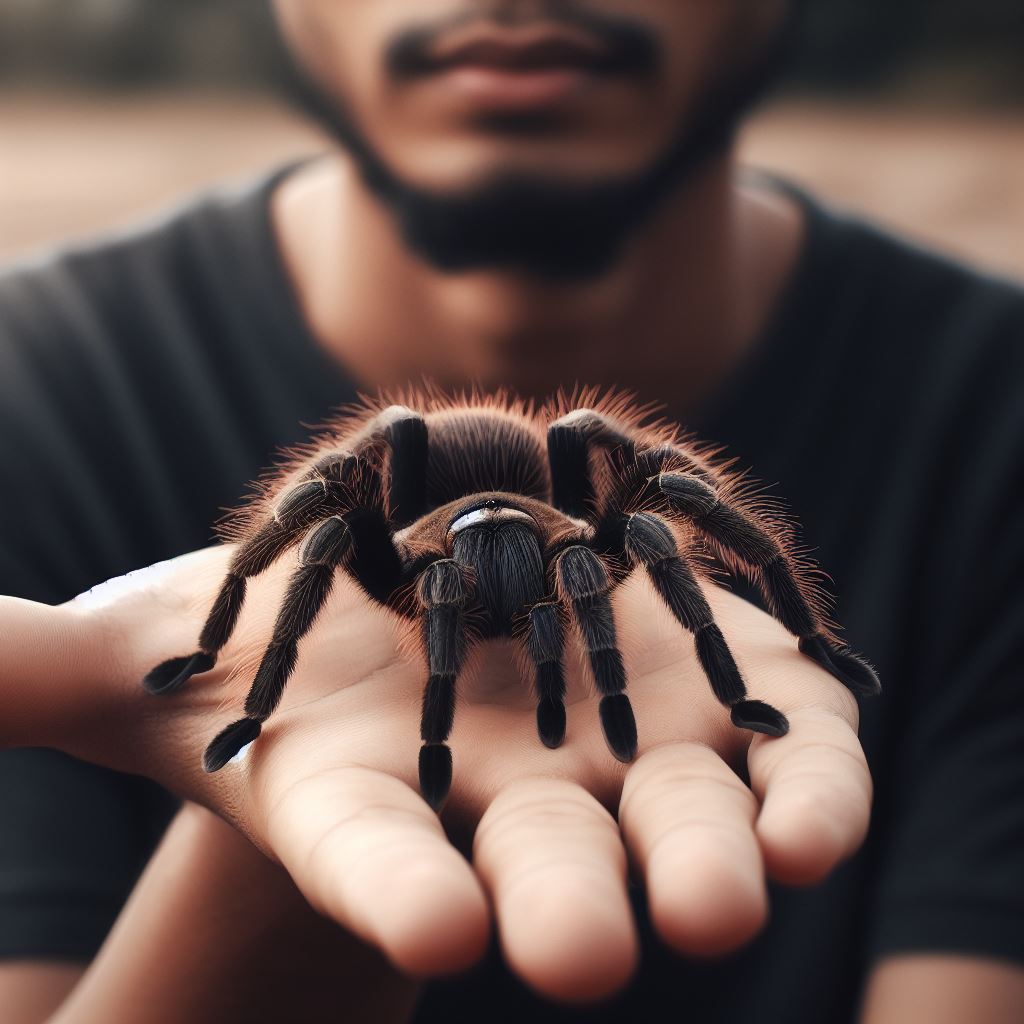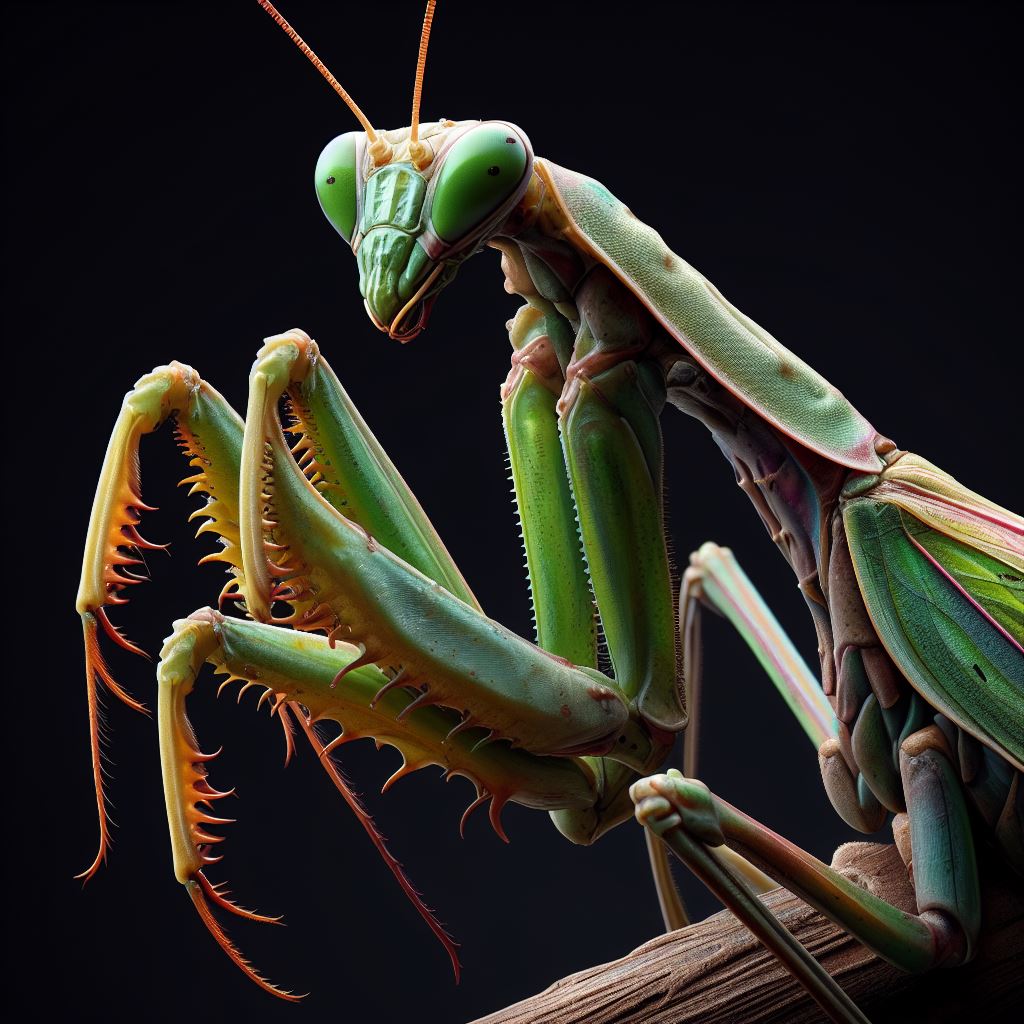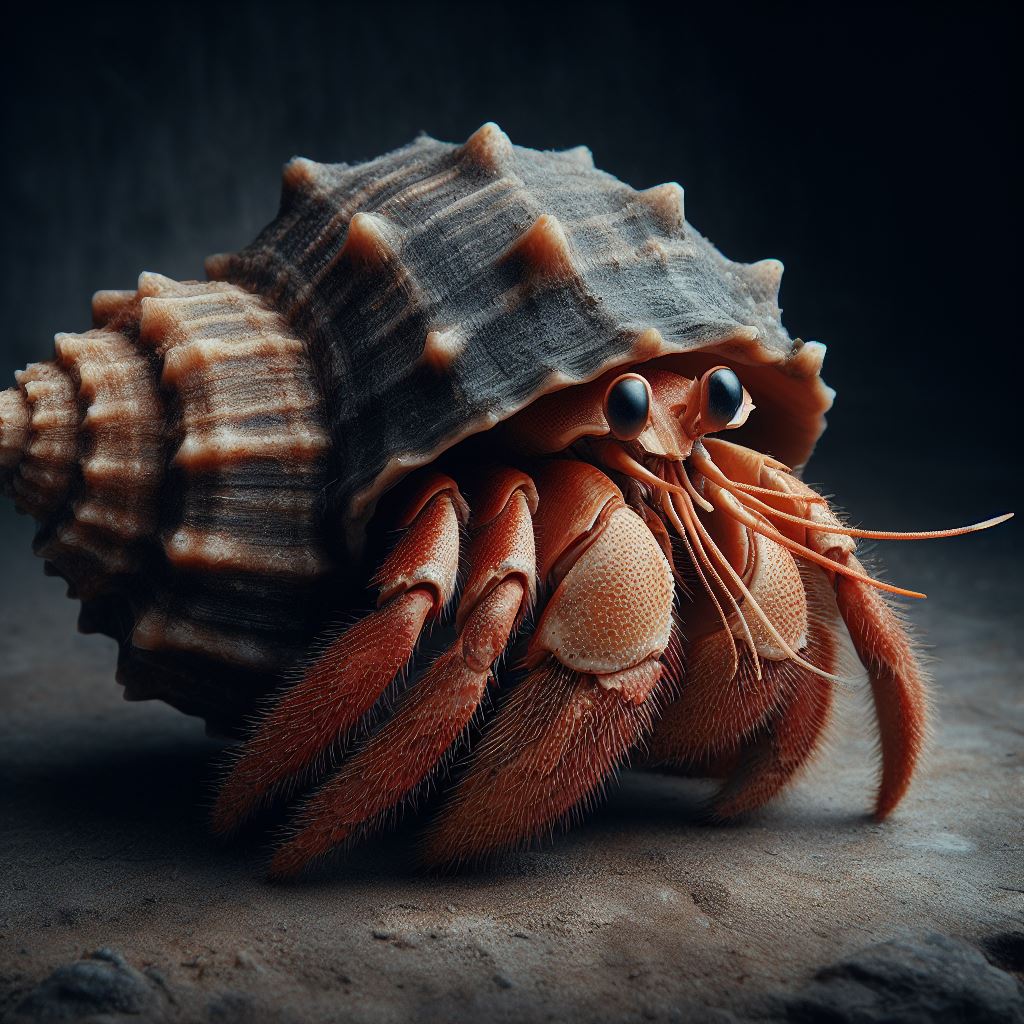The Orchid Mantis: a creature of ethereal beauty, an exquisite testament to nature’s artistry. In the realm of exotic pets, few captivate the imagination quite like this enigmatic species. This comprehensive pet profile aims to unravel the mysteries that shroud the Orchid Mantis. Through a detailed exploration, we venture into the intricate facets of its existence, from its taxonomy to its captivating behaviors, shedding light on the secrets that make it a remarkable pet choice.
Species Name: Orchid Mantis
Taxonomy and Classification
Belonging to the order Mantodea, the Orchid Mantis, scientifically known as Hymenopus coronatus, occupies a unique niche in the insect world. Its taxonomic classification showcases its evolutionary journey, offering insights into its biological connections.
Physical Characteristics
- Graceful Body Structure The Orchid Mantis boasts a slender, elongated body, a design optimized for agility and stealth. Its physique is a masterpiece of evolutionary adaptation, facilitating precise movements and efficient hunting strategies.
- Stunning Colors and Mimicry Nature has bestowed upon the Orchid Mantis a mesmerizing palette. Petal-like hues adorn its limbs, mimicking the delicate shades of orchid flowers. This camouflage is not just an evolutionary trait; it’s a work of art, concealing the mantis in plain sight.
Description of Orchid Mantis
Size and Shape
The Orchid Mantis, with its delicate form, typically measures around 2.4 to 3.5 inches, exhibiting a size that combines elegance with practicality. Its slender shape aids in seamless movement, allowing it to navigate its habitat with grace and precision.
Orchid-Like Appearance
The name ‘Orchid Mantis’ finds its origins in the striking resemblance this species bears to orchid flowers. Its appearance is not merely coincidental; it’s a form of mimicry, a cunning adaptation that aids in ambushing prey and evading predators. This mimicry is a testament to the evolutionary artistry sculpted by nature’s selective forces.
Notable Features
- Petal-Like Limbs The most distinctive feature of the Orchid Mantis is its petal-shaped limbs. These intricately designed appendages enhance its floral mimicry, ensuring that it blends seamlessly into the orchid-rich environments it inhabits.
- Camouflaging Abilities Orchid Mantises are masters of camouflage. Their ability to imitate the appearance of orchid flowers is not just for aesthetic purposes; it’s an evolutionary strategy that provides both defense and offense. By resembling a harmless bloom, they lure unsuspecting prey into their deadly trap.
Habitat of Orchid Mantis
Native Geographical Locations
The Orchid Mantis graces the rainforests of Southeast Asia with its presence. Countries like Malaysia, Indonesia, and parts of Northern India serve as the natural habitats where these elegant creatures can be found. Within the lush greenery of these rainforests, they carve their niche, thriving amidst the vibrant flora and diverse fauna.
Natural Environmental Conditions
- Preferred Vegetation Orchid Mantises predominantly inhabit areas abundant in orchid varieties. These flowering plants not only provide sustenance but also serve as the mantises’ sanctuary, offering a tapestry of colors and shapes, further enhancing their mimicry.
- Climate and Temperature The Orchid Mantis flourishes in the warm, tropical climate of its native habitat. High humidity levels and moderate temperatures create an environment conducive to their survival. These conditions not only facilitate their physiological functions but also influence their behavioral patterns, shaping their unique way of life.
Diet of Orchid Mantis
Carnivorous Nature
The Orchid Mantis is an obligate carnivore, relying solely on a diet of insects and small invertebrates. Its predatory nature distinguishes it as a top-tier hunter, preying on creatures much smaller than itself.
Hunting Techniques and Adaptations
- Camouflage in Nature The Orchid Mantis capitalizes on its orchid-like appearance as a hunting strategy. Positioned amidst real orchid blooms, it patiently waits, blending seamlessly into its surroundings. Unsuspecting insects, lured by the illusion of safety, become unwitting victims.
- Patient Predatory Behavior Orchid Mantises are masters of patience. They remain motionless for extended periods, exhibiting a stoic stillness that conceals their predatory intent. This patience, akin to the art of meditation, is rewarded with successful hunts, showcasing the mantises’ methodical approach to survival.
Carnivorous Nature
- Insects and Their Significance Orchid Mantises primarily prey on small insects like flies, moths, and butterflies. In the intricate web of rainforest life, these insects are not merely sustenance but essential components of the ecosystem. By controlling their populations, the Orchid Mantis indirectly contributes to the delicate balance of the rainforest ecosystem.
- Unique Feeding Habits Orchid Mantises exhibit fascinating feeding habits. Their agile limbs deftly capture prey, showcasing a dexterity that reflects their evolutionary mastery. Each feeding session is a ballet of precision, a testament to the mantises’ prowess in the art of predation.
Feeding Habits of Orchid Mantis
Frequency of Feeding
The feeding frequency of Orchid Mantises is influenced by factors such as environmental conditions and prey availability. These intuitive hunters gauge the ecosystem’s rhythms, adapting their feeding patterns accordingly. While some feed daily, others may wait patiently for the opportune moment, conserving their energy until a bountiful opportunity arises.
Role of Predation in Orchid Mantis Life Cycle
Predation serves as more than just a means of sustenance for Orchid Mantises; it is a fundamental aspect of their life cycle. Successful predation ensures their growth, facilitating molting phases crucial for their development. Each meal contributes not only to their survival but also to their transformation, marking the passage of time and the maturation of these elegant hunters.
Behavioral Insights During Feeding
Observing the Orchid Mantis during feeding reveals a captivating spectacle. Their deliberate movements, marked by precision and finesse, highlight their adaptability and strategic prowess. Studying these behavioral nuances offers a glimpse into the complexity of their predatory instincts, enriching our understanding of their role in the rainforest ecosystem.
Care Tips for Orchid Mantis Owners
Suitable Housing Requirements
- Enclosure Design and Size Creating a habitat that mirrors the Orchid Mantis’s natural environment is paramount. Enclosures should provide ample space for movement, allowing these creatures to express their elegant agility freely. Vertical space is essential, accommodating their arboreal lifestyle and facilitating climbing, a behavior ingrained in their evolutionary heritage.
- Foliage and Hiding Spots Live plants, especially orchids, are more than just aesthetic additions; they serve as essential elements of the mantises’ habitat. These plants offer not only visual enrichment but also functional hiding spots, providing security and comfort to these creatures. The presence of live foliage enhances their psychological well-being, fostering a sense of natural belonging.
Temperature and Humidity Control
- Importance of Proper Heating Maintaining an optimal temperature range is critical to the Orchid Mantis’s well-being. Heat sources, such as heat pads or heat lamps, should be strategically positioned to create thermal gradients within the enclosure. These gradients allow the mantises to regulate their body temperature, ensuring their physiological functions remain unhindered.
- Maintaining Ideal Humidity Levels Orchid Mantises thrive in high-humidity environments, akin to their native rainforest habitat. Humidity levels should be meticulously regulated, with misting systems or hand sprayers employed to simulate natural rainfall. Consistent humidity not only supports their hydration but also aids in the preservation of their delicate exoskeletons, ensuring their vitality and longevity.
Social Needs and Behavior
- Orchid Mantis Solitude Orchid Mantises are solitary beings, preferring a life of solitude over communal existence. Keeping them individually ensures minimal stress, allowing them to express their natural behaviors without the constraints of social interactions. Solitude is not a form of isolation but a respectful acknowledgment of their evolutionary inclinations.
- Interaction Limitations While these mantises are enchanted in their beauty, interaction should be limited to essential care activities. While they may seem delicate, their evolutionary adaptations equip them for the challenges of their rainforest habitat. Respecting their boundaries ensures not only their well-being but also fosters a harmonious relationship between pet and owner.
Exercise and Mental Stimulation
- Enrichment Activities Orchid Mantises thrive on mental stimulation. Enrichment activities, such as introducing novel elements into their enclosure or offering different prey items, awaken their curiosity. These activities not only engage their intellect but also encourage exploratory behaviors, fostering a sense of wonder in their captive environment.
- Exercise through Hunting Hunting is not merely a means of obtaining sustenance for Orchid Mantises; it’s an exercise in agility and precision. Live prey items, introduced in a controlled manner, allow these mantises to hone their hunting skills. Watching them execute their hunting techniques is not just a visual delight but a reminder of their innate prowess as predators.
Grooming Routines and Molting Process
Orchid Mantis Molting Stages
The molting process of Orchid Mantises is a testament to their growth and metamorphosis. As they outgrow their exoskeletons, they enter molting stages, shedding their old selves to embrace a new phase of their existence. These stages are not just biological transitions but symbolic representations of resilience and adaptation.
Molting Frequency and Growth
The frequency of molting varies based on factors like age, diet, and environmental conditions. Molting is more than a physical necessity; it’s a manifestation of their evolutionary journey. Each molt signifies growth, marking their progression through life stages. Understanding their molting frequency offers insights into their development and vitality.
Assistance and Precautions During Molting
Molting is a vulnerable phase for Orchid Mantises. During this period, they require a stress-free environment, devoid of disturbances. Pet owners play a crucial role in ensuring their safety during molting. Providing a quiet space and removing uneaten prey items are essential precautions. Assistance, in the form of gentle removal of old exoskeletons, might be necessary in specific cases, guaranteeing a smooth molting process.
Medical Care and Common Health Issues
Observation for Health Indicators
Vigilance is the cornerstone of Orchid Mantis care. Regular observation of their behaviors, appetite, and physical appearance allows pet owners to detect early signs of health issues. Changes in posture, reduced activity, or alterations in feeding habits serve as indicators, signaling the need for prompt attention and potential veterinary care.
Handling Stress and Behavioral Changes
Orchid Mantises are sensitive creatures, attuned to their environment and the energy around them. Handling should be minimized to prevent stress and ensure their well-being. Behavioral changes, such as excessive hiding or sudden aggression, might be manifestations of stress or health issues. Addressing these changes promptly is essential, promoting their mental and physical health.
Importance of Regular Check-ups
Routine check-ups with experienced exotic pet veterinarians are indispensable. These professionals possess the expertise to conduct thorough examinations, addressing potential health concerns. Regular veterinary visits not only offer peace of mind to pet owners but also contribute significantly to the longevity and quality of life of Orchid Mantises.
Necessary Equipment and Supplies
Appropriate Enclosures and Terrariums
Selecting the right enclosure is pivotal to Orchid Mantis care. Vertical terrariums, with ample height for climbing, are ideal. Mesh enclosures facilitate ventilation, ensuring optimal airflow within the habitat. A carefully chosen enclosure is not just a physical space but a sanctuary, providing comfort and security to these elegant creatures.
Heating and Lighting Essentials
Maintaining consistent temperature levels is facilitated by heating devices like heat pads or heat lamps. These devices create warm zones within the enclosure, enabling the mantises to regulate their body temperature effectively. While Orchid Mantises do not require specific lighting, a regular day-night cycle can be established using low-wattage bulbs, mimicking their natural environment.
Humidity Control Tools and Techniques
Humidity control is fundamental to Orchid Manti’s well-being. Misting systems or hand sprayers are employed to maintain optimal humidity levels within the enclosure. The strategic placement of foliage and live plants aids in retaining humidity, ensuring that these mantises are surrounded by an atmosphere akin to their rainforest habitat.
Feeder Insects and Nutrition
Feeder insects, meticulously chosen for their nutritional value, are vital components of the Orchid Mantis diet. Crickets, flies, and other small insects serve as not just meals but essential sources of nutrients. Breeding these insects at home ensures a readily available and nutritious food supply, allowing pet owners to cater to their dietary needs effectively.
Handling Tools and Safety Gear
Gentle handling tools, such as soft brushes or catch cups, are essential for interaction with Orchid Mantises. These tools minimize stress and ensure safe handling experiences. For enthusiasts who prefer hands-on interaction, wearing soft gloves made of materials like latex or nitrile offers protection during handling sessions, fostering a secure environment for both the pet and the owner.
Social Aspects of Orchid Mantis Keeping
Online Communities and Forums
Engaging with fellow Orchid Mantis enthusiasts through online forums and social media platforms provides a valuable support network. These communities serve as hubs of knowledge exchange, allowing pet owners to share experiences, seek advice, and participate in discussions related to Orchid Mantis care. The collective wisdom of these communities enriches the journey of pet ownership.
Sharing Knowledge and Experiences
The act of sharing knowledge and experiences within the Orchid Mantis community is not just a gesture of camaraderie; it’s a contribution to the collective understanding of these remarkable creatures. Insights about successful breeding, feeding techniques, and behavioral observations are invaluable. By sharing these experiences, pet owners empower one another, fostering a sense of unity and mutual growth.
Orchid Mantis Conservation Initiatives
Orchid Mantises, like many other exotic species, face threats to their natural habitats due to human activities. Engaging in conservation initiatives is a responsibility borne by pet owners and enthusiasts. Supporting organizations dedicated to rainforest preservation, as well as participating in awareness campaigns, ensures that the Orchid Mantis and its fellow rainforest inhabitants have a fighting chance at survival.
Common Misconceptions about Orchid Mantis
Clarifying Misguided Beliefs
Misconceptions often shroud exotic species like the Orchid Mantis, leading to unwarranted fear or misunderstanding. One prevalent misconception is the belief that Orchid Mantises are delicate and difficult to care for. In reality, with proper knowledge and commitment, these creatures thrive in captivity, showcasing their resilience and adaptability.
Debunking Orchid Mantis Myths
Myths surrounding the Orchid Mantis range from notions about their toxicity to misguided beliefs about their temperament. Debunking these myths requires factual information and education. By dispelling these misconceptions, enthusiasts contribute to the accurate portrayal of these creatures, fostering a positive outlook that encourages responsible pet ownership.
Dispelling Fear Through Education
Education serves as the most potent weapon against fear and prejudice. By educating the public about the true nature of Orchid Mantises, enthusiasts dismantle the barriers of fear. Public awareness campaigns, educational workshops, and informative articles contribute to dispelling fear, opening the door to a world where these elegant creatures are appreciated and respected.
Orchid Mantis in Culture and History
Symbolism and Cultural Significance
In various cultures, the Orchid Mantis symbolizes traits like patience, beauty, and adaptability. Its mimicry of orchid flowers embodies the concept of camouflage, teaching valuable lessons about adaptation and survival. As a symbol, it transcends the realm of the physical, embodying the essence of resilience and grace.
Orchid Mantis in Art and Literature
Throughout history, the Orchid Mantis has inspired artists, writers, and poets. Its elegance and mimicry have found expression in paintings, poems, and literary works. Artists, captivated by its form, have sought to capture its beauty on canvas, while writers have woven its mystique into tales that echo its grace and mystery.
Historical References and Influences
Historically, the Orchid Mantis has left its mark on cultures and civilizations. Ancient civilizations revered the mantis for its symbolic significance, associating it with spirituality and contemplation. References to its mimicry and hunting prowess have found their way into texts and folklore, shaping the perceptions of societies throughout the ages.
Famous Orchid Mantis Species
Notable Orchid Mantis Varieties
Certain Orchid Mantis species have gained fame for their unique characteristics. Varieties like the Malaysian Orchid Mantis (Hymenopus coronatus var. malayica) and the Pink Orchid Mantis (Hymenopus coronatus var. sinensis) are celebrated for their distinct colors and patterns. Studying these varieties not only offers aesthetic pleasure but also deepens our understanding of the species diversity.
Unique Behavioral Traits of Famous Species
Famous Orchid Mantis species exhibit remarkable behaviors that set them apart. From distinct hunting techniques to specialized mimicry, these traits offer glimpses into the evolutionary adaptations that have shaped their survival strategies. Understanding these behaviors broadens our perspective, revealing the complexity of their existence.
Significance in Scientific Research
Beyond their enchanting allure, Orchid Mantises hold significance in scientific research. Their mimicry, camouflage, and hunting techniques provide valuable insights into evolutionary biology and ecological adaptations. Scientists study these behaviors, unraveling the secrets that have allowed this species to thrive amidst the challenges of their rainforest habitat.
Fun Facts about Orchid Mantis
Intriguing Behavioral Quirks
Orchid Mantises exhibit intriguing behavioral quirks that fascinate enthusiasts and researchers alike. One such quirk is their ability to sway gently, imitating the movement of orchid blooms in the breeze. This motion serves both as a hunting tactic and a form of communication, showcasing their multifaceted nature.
Orchid Mantis in Popular Culture
The mystique of the Orchid Mantis has found its way into popular culture. From appearances in documentaries to depictions in art films, these creatures have captured the imagination of filmmakers and artists. Their elegant demeanor and graceful movements have made them subjects of admiration, translating into their portrayal on screen and in various forms of media.
Unique Orchid Mantis Discoveries
The world of Orchid Mantises is teeming with discoveries waiting to be unveiled. Researchers continue to explore new species, uncovering previously unknown varieties that expand our understanding of their diversity. Each discovery is a testament to the complexity of rainforest ecosystems and the wonders they hold.
Conclusion
In the heart of rainforests, amidst the vibrant hues of orchids, the Orchid Mantis reigns as a living masterpiece. Its elegant form, graceful movements, and ingenious mimicry make it a jewel in the crown of exotic pets. Through this pet profile, we have embarked on a journey into the Orchid Mantis’s world, unraveling its secrets and celebrating its beauty.
Orchid Mantis as a Fascinating Pet
Choosing the Orchid Mantis as a pet is an invitation to explore the marvels of nature within the confines of one’s home. Its presence enriches lives, offering daily glimpses into the intricacies of the rainforest. As a pet, it not only captivates with its visual allure but also engages with its intriguing behaviors, fostering a profound connection between humans and the natural world.
Responsible Ownership and Continued Learning
Owning an Orchid Mantis is not merely a privilege; it is a responsibility. Responsible ownership entails providing optimal care, respecting their natural behaviors, and contributing to conservation efforts. Continued learning, through books, forums, and scientific studies, enhances our ability to provide the best possible environment for these elegant creatures, ensuring their well-being and longevity.
Celebrating the Orchid Mantis’s Unique Beauty
In the grand tapestry of biodiversity, the Orchid Mantis stands as a testament to nature’s ingenuity. Its unique beauty, both aesthetic and behavioral, is a cause for celebration. By appreciating its elegance and understanding its place in the intricate web of life, we honor not just the Orchid Mantis but also the rainforest ecosystems it represents. May our collective admiration inspire generations to cherish and protect the delicate wonders of the natural world.




